Walpurgis Night in Sankt Andreasberg – Backgrounds
- Written by Portal Editor
Of course, everyone knows the legends and stories about the witches from the Brocken, about the witches' dance floor near Thale or other scary stories about Walpurgis Night and the interpretation of witch customs in the Harz Mountains.
A far cry from the burning of witches in the Middle Ages in some strongholds of witch hunts for religious motives.
May 1st, the memorial day of the apostles Philip and James
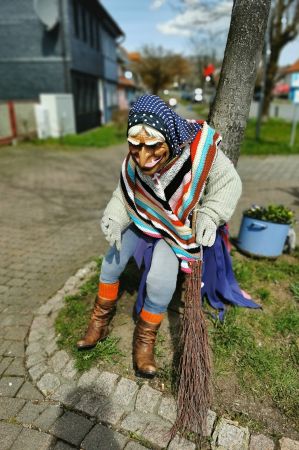 This time we were in Sankt Andreasberg, where we noticed the numerous witch figures that were placed in the front gardens, on lampposts or on public benches. No question, this is where our research started immediately, because of course we also know that the so-called Walpurgis Night was imminent in the Harz region, which is celebrated in other regions with a dance into May. Traditionally, the night from April 30th to May 1st is considered the night when the witches held a big festival, especially on the Blocksberg (the "Brocken"), but also at other elevated places. This idea is influenced by the descriptions of the so-called Witches' Sabbath in the literature of the 15th and 16th centuries. May 1 used to be the Memorial Day of the apostles Philip and Jacobus and was therefore called "Philippi Jacobi". Johannes Coler wrote in his Calendarium Perpetuum in 1603:
This time we were in Sankt Andreasberg, where we noticed the numerous witch figures that were placed in the front gardens, on lampposts or on public benches. No question, this is where our research started immediately, because of course we also know that the so-called Walpurgis Night was imminent in the Harz region, which is celebrated in other regions with a dance into May. Traditionally, the night from April 30th to May 1st is considered the night when the witches held a big festival, especially on the Blocksberg (the "Brocken"), but also at other elevated places. This idea is influenced by the descriptions of the so-called Witches' Sabbath in the literature of the 15th and 16th centuries. May 1 used to be the Memorial Day of the apostles Philip and Jacobus and was therefore called "Philippi Jacobi". Johannes Coler wrote in his Calendarium Perpetuum in 1603:
"The next day before Philippi Jacobi in the evening Zeuberer practice a lot of Teuffeley / so that they insult people a lot", but also in the same section: "If it rains on S. Walpurgis evening / or the same night / the common man hopes up a good year."
Customs and superstition on Walpurgis Night
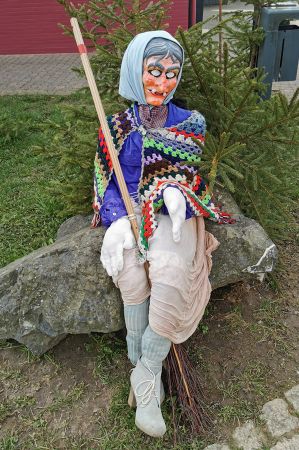 Many Walpurgis rites live on in the predominantly rural May customs.
Many Walpurgis rites live on in the predominantly rural May customs.
In folk customs, one protected one's yard by cracking whips at night, laying out brooms and may bushes.
The maypole, usually a birch, is also a symbol of fertility. At Walpurgis, the maypoles are traditionally brought from the forest to the village in order to place them in front of the loved one's house.
In the middle of the village people dance around the tree. In pre-Christian times, ritual acts of love in the fields were said to transfer human fertility to the soil.
The monoliths in Wendland (e.g. in Woltersdorf and Trebel), which are called bridal stones, play a special role here.
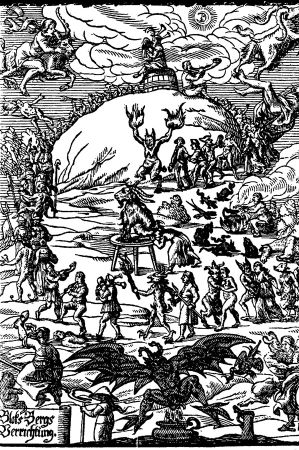 They were regarded as petrified bridal couples. It is said to have been the custom on Walpurgis Night for girls with exposed genitals to slide over these stones to wish for their lover.
They were regarded as petrified bridal couples. It is said to have been the custom on Walpurgis Night for girls with exposed genitals to slide over these stones to wish for their lover.
Many of the customs at spring festivals are centered around young couples, who are symbolic of human community. The corridor between two Walpurgis fires is supposed to cleanse and keep away epidemics. Walpurgis is considered the patron saint against plague, coughs and rabies. The witch fires, which are still celebrated in large parts of Germany today, presumably go back to this tradition. With the very rigorous Christianization, not only in Germany, these old customs were condemned as pagan, the original meaning was lost and merged into rural youth customs.
Brockenhotel and a move to the Teufelskanzel
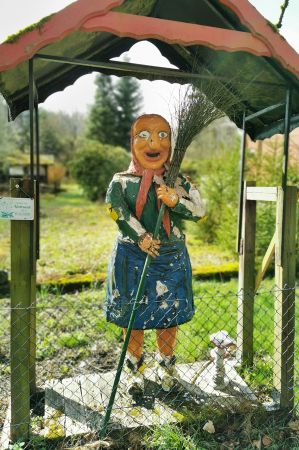 The first Walpurgis Night celebrations on the Brocken were organized in 1896 by Rudolf Stolle, a publishing bookseller from Bad Harzburg and a member of the Bad Harzburg branch of the Harz Club. The festival consisted of a celebration in the Brocken Hotel and a parade to the Teufelskanzel at midnight with a corresponding speech. There were only male guests present. A few years later, the Geibelsche Mailied was sung in society. In 1901, the Walpurgis Hall on the Hexentanzplatz was inaugurated. From 1901, special trains on the Brocken Railway were already running on the Brocken. In 1902 almost 150 guests met for the Walpurgis celebration. As early as 1,000 years ago, the "natives" of the Harz Mountains celebrated a spring festival, at which spring was greeted with various offerings to the supreme Germanic god Wodan. The Harz Walpurgis Nights are now celebrated in more than 20 towns in the region. The centre is located in the towns of Bad Grund, Braunlage, Hahnenklee, Sankt Andreasberg, Schierke and Thale.
The first Walpurgis Night celebrations on the Brocken were organized in 1896 by Rudolf Stolle, a publishing bookseller from Bad Harzburg and a member of the Bad Harzburg branch of the Harz Club. The festival consisted of a celebration in the Brocken Hotel and a parade to the Teufelskanzel at midnight with a corresponding speech. There were only male guests present. A few years later, the Geibelsche Mailied was sung in society. In 1901, the Walpurgis Hall on the Hexentanzplatz was inaugurated. From 1901, special trains on the Brocken Railway were already running on the Brocken. In 1902 almost 150 guests met for the Walpurgis celebration. As early as 1,000 years ago, the "natives" of the Harz Mountains celebrated a spring festival, at which spring was greeted with various offerings to the supreme Germanic god Wodan. The Harz Walpurgis Nights are now celebrated in more than 20 towns in the region. The centre is located in the towns of Bad Grund, Braunlage, Hahnenklee, Sankt Andreasberg, Schierke and Thale.
Witch fire and dance into May
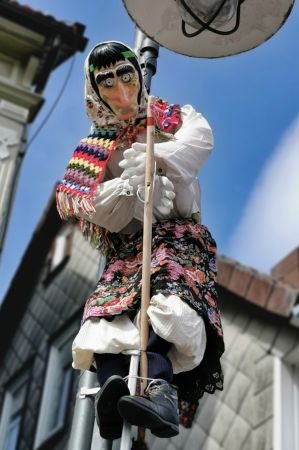 The witch fire (also called dance into May or May fire) is celebrated in large parts of Germany. For this purpose, a fire is kindled on April 30, with which one wants to drive away "the evil spirits". This is celebrated late into the night. When the fire has burned down a bit, the May Leap takes place in some areas, a custom in which it is customary for lovers to jump over the May fire together. Wooden "witches" occasionally stand on the witch fire, most of which were made by youth.
The witch fire (also called dance into May or May fire) is celebrated in large parts of Germany. For this purpose, a fire is kindled on April 30, with which one wants to drive away "the evil spirits". This is celebrated late into the night. When the fire has burned down a bit, the May Leap takes place in some areas, a custom in which it is customary for lovers to jump over the May fire together. Wooden "witches" occasionally stand on the witch fire, most of which were made by youth.
Incidentally, the name Walpurgis Night is derived from Saint Walburga (also Walpurga or Walpurgis), an abbess from England (≈ 710–779). The Memorial Day of these saints was celebrated in the Middle Ages on May 1st (in the German regional calendar now on February 25th, the day of her death). The nine days before that were called Walpurgi days, the ringing of bells to ward off the alleged witchcraft is also described locally as Walpern.
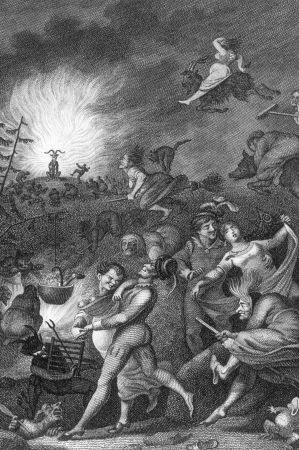 The name Walpurgisnacht was greatly popularized by Goethe's Faust (Part I, 1808); earlier documents from the 18th century are, however, detectable. Adelung's dictionary (1774–1786) noted under Walpurgis:
The name Walpurgisnacht was greatly popularized by Goethe's Faust (Part I, 1808); earlier documents from the 18th century are, however, detectable. Adelung's dictionary (1774–1786) noted under Walpurgis:
“Walpurgis evening, Walpurgis night.
Since the year began with the first of May for the Germans, as well as for the other European peoples, in the oldest times, the superstition that still prevailed in regard to the Walpurgis night among the large crowd is probably a remnant of it, and that among the Turn of the year formerly customary."
Opening of the stands on the meadow in front of the Kurhaus in St. Andreasberg.
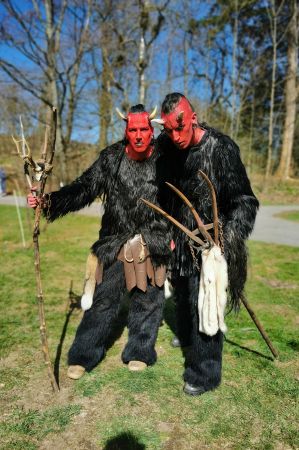 The Andreasberg witches and devils will get residents and guests in the mood for Walpurgis on Saturday evening, April 29, 2023. On the "Witches' Light" adventure hike, young and old explore the secret paths of the mountain town together with the Annerschbarrich witches' circle. With a small snack afterwards, all guests can regain their strength.
The Andreasberg witches and devils will get residents and guests in the mood for Walpurgis on Saturday evening, April 29, 2023. On the "Witches' Light" adventure hike, young and old explore the secret paths of the mountain town together with the Annerschbarrich witches' circle. With a small snack afterwards, all guests can regain their strength.
From 2 p.m. on April 30, the "Walpurgis for Kids" begins with the opening of the stands on the meadow in front of the Kurhaus in St. Andreasberg. Here the young witches and devils can have their make-up done for the witches' parade. Demonstrations such as the play "Walpurgisspuck im Kurpark" with the little witch Schrummbumm and Kater Purr, hellish hustle and bustle, the parade from the Glockenberg through the city at 6 p.m. or demonstrations round off the Walpurgis for kids in the Kurpark.
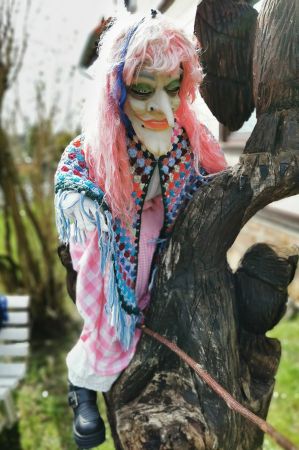 The Walpurgis celebration begins at 8 p.m. in the Sankt Andreasberg Kurhaus.
The Walpurgis celebration begins at 8 p.m. in the Sankt Andreasberg Kurhaus.
Listen to the live music and experience dance performances by the Annerschbarrich witches' circle. Another highlight is the play "Die Walpurgisnacht" based on Goethe's Faust at 11 p.m.
At 10 a.m. on May 1st, the “diabolical entrance” to the underworld of the Samson pit begins. Afterwards, the Waldarbeiter Instrumental Musikverein e.V. on the Gaipelplatz will ensure a good atmosphere and a successful start to May.
Please read as well:
Schenkenschanz – by chance due to a purchase
Drilon - idyllic green park landscape near Pogradec
-
 Sankt Andreasberg at Walpurgis Ceremony
Sankt Andreasberg at Walpurgis Ceremony
Sankt Andreasberg at Walpurgis Ceremony
Sankt Andreasberg at Walpurgis Ceremony
-
 Sankt Andreasberg at Walpurgis Ceremony
Sankt Andreasberg at Walpurgis Ceremony
Sankt Andreasberg at Walpurgis Ceremony
Sankt Andreasberg at Walpurgis Ceremony
-
 Sankt Andreasberg at Walpurgis Ceremony
Sankt Andreasberg at Walpurgis Ceremony
Sankt Andreasberg at Walpurgis Ceremony
Sankt Andreasberg at Walpurgis Ceremony
-
 Sankt Andreasberg at Walpurgis Ceremony
Sankt Andreasberg at Walpurgis Ceremony
Sankt Andreasberg at Walpurgis Ceremony
Sankt Andreasberg at Walpurgis Ceremony
-
 Sankt Andreasberg at Walpurgis Ceremony
Sankt Andreasberg at Walpurgis Ceremony
Sankt Andreasberg at Walpurgis Ceremony
Sankt Andreasberg at Walpurgis Ceremony
-
 Sankt Andreasberg at Walpurgis Ceremony
Sankt Andreasberg at Walpurgis Ceremony
Sankt Andreasberg at Walpurgis Ceremony
Sankt Andreasberg at Walpurgis Ceremony
https://www.alaturka.info/en/germany/lower-saxony/6071-walpurgis-night-in-sankt-andreasberg-backgrounds#sigProId6d1c4946e6

